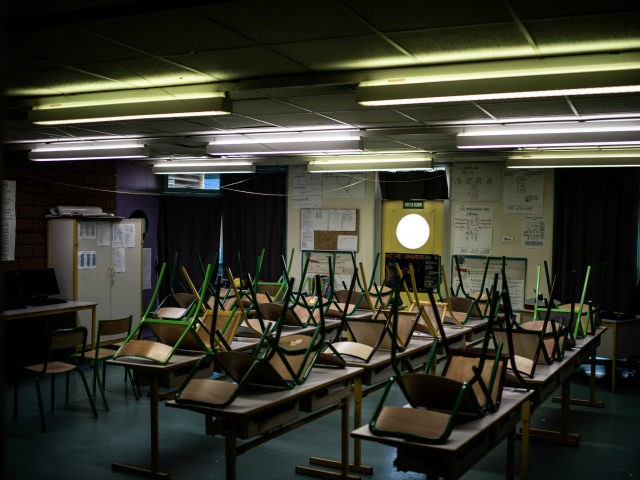Dr. Rochelle Walensky said Friday the updated guidelines of the Centers for Disease Control and Prevention (CDC) for K-12 school reopenings were created “free from political meddling,” using “available science” and as a result of hearing from “stakeholders” in public education.
During a press call about the new guidelines, CDC Director Walensky commented on the origins of the new guidelines:
We have conducted an in-depth review of the available science and evidence base to guide our recommendations, and we have also engaged with many education and public-health partners, to hear firsthand from parents and teachers, directly, about their experiences and concerns.
These sessions were so informative, and direct changes to the guidance were made as a result of them.
Walensky added the decision to return to in-classroom learning “is not one that any of us take lightly.”
“At CDC, we have thoroughly reviewed the science, and engaged with stakeholders as we worked to produce an operational strategy, to support safe, in-person instruction and protect teachers, students, and other school staff,” she said.
The science shows us that most disease transmission does not happen in the walls of the school, but it comes in from the community. So, CDC is advocating to get our K-5 students back in school at least in a hybrid mode with universal mask wearing and 6 ft of distancing. https://t.co/dfvJ2nl2s4
— Rochelle Walensky, MD, MPH (@CDCDirector) February 14, 2021
Walensky discussed the updated guidelines as some public schools in the nation have still not returned to in-classroom learning since March 2020, leaving especially low-income children at a tremendous disadvantage as they fall behind further in the core subject areas of Reading and math.
In Chicago, for example, the teachers union and the city have been engaged in a bitter dispute for months over reopening schools.
Asked by a reporter from the Washington Post about differences in the “substance or in tone” of the CDC school guidelines between the Trump and Biden administrations, Walensky replied:
I want to just highlight a few things that I think are key and different in this school guidance. One is we have done an extensive, scientific review. We have learned a lot from what experiences happened in United States, here, in the fall, as well as, in the EU, where schools have opened more so than they have potentially here. So, there is more science to rely on, and we’ve learned a lot from that science. That science is woven into the fabric of these guidances.
We’ve used stronger language than prior guidance. We’ve been much more prescriptive here, as to putting some guardrails on what can and should be done, in order to get to a safe reopening. And I can assure you that this is free from political meddling. So, that, I want to just make sure is clearly understood.
A Yahoo News reporter then questioned Walensky about her comment that the new guidance was “free from political meddling.”
“Did the White House review what – your remarks or the guidance, itself?” the reporter asked.
“We have presented pieces of this guidance to the White House, so that they knew what we were planning,” Walensky responded. “But they have not reviewed my remarks.”
Centers for Disease Control and Prevention director Rochelle Walensky said on this week’s broadcast of “Fox News Sunday” that to get children back to school amid the coronavirus pandemic, “a lot more resources” are needed. https://t.co/DlDS0UzjnG
— Breitbart News (@BreitbartNews) February 14, 2021
Joining Walensky was Donna Harris-Aikens, senior adviser for Policy and Planning at the U.S. Department of Education, formerly National Education Association (NEA) director of education policy and practice.
The Yahoo reporter continued with a second question, this one for Harris-Aikens, about her “long relationship with the NEA.”
“Is your presence here, sort of, a sign to the unions, the NEA, the UFT, that they should be less reluctant to reopen schools?” the reporter asked.
Harris-Aikens replied, “No, my presence here is not a message to anyone.”
“My employer is the U.S. Department of Education, and I represent their views,” she continued. “We have talked to a variety of stakeholders and look forward to continuing our robust engagement with all sorts of stakeholders, not only in the school community but in the community at large. That includes superintendents, principals, civil rights groups, and all sorts of other folks.”

COMMENTS
Please let us know if you're having issues with commenting.